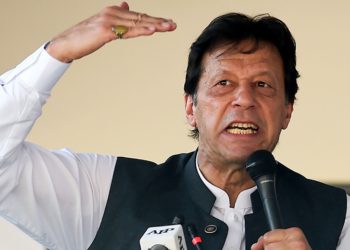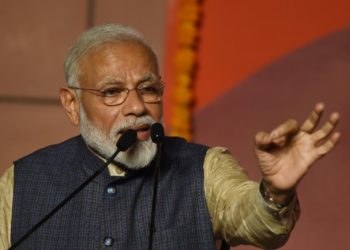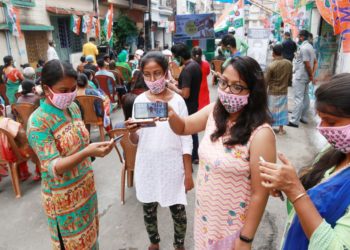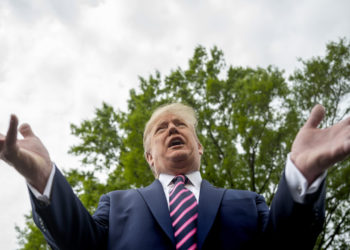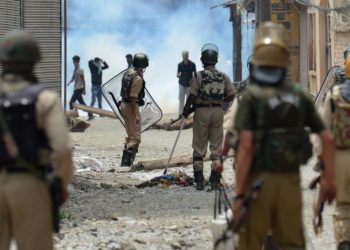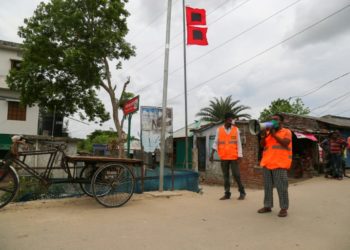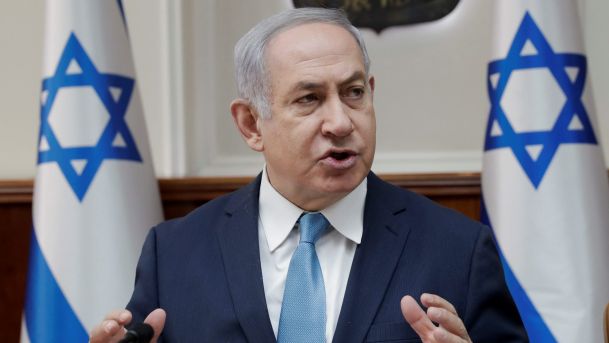Indian Prime Minister Narendra Modi and Chief Minister of West Bengal Mamata Banerjee are well-known political rivals who often launch themselves into diatribe. But during the ongoing general elections to elect a new prime minister after May 23, the duo have taken their war of words to another level.
In the latest salvo aimed at Modi, Banerjee accused the former of running a “fascist government” and drew parallels between her political fight against his right-wing Hindu nationalist Bharatiya Janata Party (BJP) and the late Mohandas Gandhi’s “Quit India” Movement against the imperialist British in the early 1940s.
During World War II, Gandhi launched the ‘Quit India’ movement and demanded an end to British rule in India.
Addressing an election rally in West Bengal, Banerjee said that “Someone has to bell the cat. In 1942, the Quit India Movement was launched against the British, now we are fighting to oust a fascist Modi from power.”
“There is an emergency-like situation in the country. Nobody can speak out in public as they are scared of (Modi)… Stop this fascism and terror,” she added.
The Modi versus Mamata verbal duel has added spice and zing to the electoral battle on India’s massive political landscape.
‘The Bengal Tigress’
Banerjee is no stranger to controversy. Previously, she has been vocal against the Communist Party of India (Marxist)-led Left Front, which ruled West Bengal for over three decades.
In her new avatar, she has been extremely critical of Modi’s Hindu right-wing BJP and its majoritarian and exclusivist pro-Hindu agenda.
Her firebrand politics significantly altered West Bengal’s political landscape. Primarily, it was because of her connection with the grassroots that she succeeded in replacing the Left Front-led rule spanning over 34 years, from 1977 until 2011, in the state.
Banerjee’s political front, All India Trinamool Congress, was instrumental in defeating the CPI (M) in its bastion with her distinctive brand of politics.
As chief minister, she is the first woman in her state to hold the highest office. Her impact on Indian politics can be understood by a recent statement made by Chandrababu Naidu, another popular regional leader and chief minister of Andhra Pradesh state, who predicted that “under Mamata Banerjee’s leadership, the country will get a new PM.”
The Telugu Desam Party chief Naidu referred to Banerjee as the “Bengal tigress” when he recently shared a platform with her at Kharagpur in West Bengal’s West Midnapore district.
That is perhaps why she is seen as someone who can play a key role in stitching an anti-Modi alliance at the federal level in case no political party in the ongoing elections gains absolute majority to form the government in New Delhi.
Modi Hits Back
That said, Modi has not held back, responding to Banerjee with strong words of his own.
Modi described Banerjee as West Bengal’s “speed breaker didi” for allegedly blocking the implementation of central schemes in the state. Didi is a Bengali word used for elder sister.
Taking a jibe at one of his fiercest opponents, Modi claimed that Banerjee did not respond to his call after a neighboring state of Odisha and parts of West Bengal were recently hit by Cyclone Fani.
Media reports said that at least forty one people were feared dead thus far in the extremely severe storm. Large parts of Bhubaneshwar city and Puri district remained without electricity a week after the cyclone hit the state of Odisha on May 3. The state government has struggled to distribute relief material and assess the damage.
Addressing a rally in Tamluk area of West Bengal, Modi said that his government is working hard on relief and rescue work, but that Banjerjee has tried to play politics with the cyclone.
“I tried to get in touch with Mamata didi but her arrogance is such that she refused to talk to me,” Modi said. “I tried again but she did not get in touch. I kept on waiting, thinking that probably didi would call me back but she didn’t. I was worried for the people of West Bengal and hence, wanted to talk to her. But she didn’t talk to me.”
Super Cyclone Fani may not have caused as much damage to West Bengal as it did to neighboring Odisha, but it definitely stirred up a political hornet’s nest resulting in verbal spats between Modi and Banerjee.
Interestingly, Modi also played a victim card.
“Now politicians of all hues hurl choices of abuse and invective on me, increasing my strength to digest (tolerate) criticism,” he said while speaking to a pro-BJP news channel Times Now.
“Banerjee) does not recognize me as her Prime Minister, a Prime Minister who was elected by 1.25 billion Indians. But she has no problems in addressing the Pakistani Prime Minister (Imran Khan) as Prime Minister. Now the people of (West) Bengal and of the entire country will decide and pass a judgment whether she respects the country’s mandate and constitution.”
Banerjee had said that she would speak to a new Prime Minister once the results of the ongoing seven-phased parliamentary elections are declared on May 23.
Emerging Leader
At a rally at West Bengal’s Gopiballavpur, she had said that “I do not consider (Modi) Prime Minister. When the new PM comes, we will speak.”
Commenting on the sharp verbal gymnastics between Modi and Banerjee, Sohini Chattopadhyay, an independent journalist and writer based in Kolkata, said that perhaps no other leader in India has challenged Modi so directly as Mamata Banerjee has.
“Over the past five years, Mamata Banerjee has communicated directly to Bengal that Modi’s government gives the state step-motherly treatment. For instance, not a single smart city project in the state, not releasing (Mahatma Gandhi National Rural Employment Act) funds for Bengal,” Chattopadhyay told The Globe Post.
Besides, she said that it was evident that the BJP has now “zeroed in on West Bengal as its next target.”
“Thereafter, as it became clear that the BJP used its cadres for rioting and rumor-mongering, Mamata Banerjee has scaled up her attacks. Modi loves showing who is the boss!,” she added.
Shah Faesal, an independent politician, the leader of the newly-formed Jammu and Kashmir People’s Movement, and a former civil administrator, showered accolades on Banerjee’s leadership.
“Mamata is an extraordinary challenger to Modi. Her successful assaults on masculine Modi have been one of the most striking features of this election, “Faesal told The Globe Post. “It won’t be out of place to state that the BJP has been more rattled by her counter-offensive than that from a defensive Congress party.”
The ‘Divider in Chief’
There is little doubt that under Modi’s leadership since May 2014, India stands sharply divided on religious and ideological lines. He has polarized the country with his hard-line and exclusivist Hindutva narrative.
The renowned American news magazine Time featured Modi on the cover page of its May 20 issue with a controversial headline: “India’s Divider in Chief.”
This headline is bound to arouse controversy in India in the election season.
The 2019 general elections to elect the seventeenth Lok Sabha (Lower House of the Indian Parliament) are currently being held in seven different phases. The first phase began on 11 April and the last phase will culminate on 19 May to constitute the Indian Parliament comprising 543 elected members of parliament.
TIME magazine asks, "Can the World's Largest Democracy Endure Another Five Years of a Modi Government?" pic.twitter.com/835oQfSNAe
— Brut India (@BrutIndia) May 14, 2019
The counting of votes will be conducted on May 23, and on the same day the results will be declared.
Of 543 parliamentary segments the BJP won 282, a decisive majority, in the 2014 general elections.
Now, several pollsters and analysts are predicting that the BJP could lose “significant number of parliamentary constituencies” in the ongoing elections.
According to Anthro.ai, a collection of anthropologists, mathematicians, data-scientists and market specialists who used artificial intelligence to analyze the elections, the BJP could lose a significant number of parliamentary constituencies, especially in the northern state of Uttar Pradesh where the party won 73 of 80 seats in the 2014 elections.
“The BJP isn’t doing all that well this time around and we think we know what’s going on … We believe we have understood the nature of the so-called undercurrent against the BJP in Uttar Pradesh. We think it’s time to call it what it is — a rumbling earthquake that is shaking the foundations of the social alliance the BJP had stitched together ahead of 2014,” that is according to Anthro.ai.
It appears that the BJP could lose as many as 40 seats from Uttar Pradesh alone.
In Banerjee’s state of West Bengal, there are 42 parliamentary constituencies and 295 Assembly seats.
The ruling Trinamool Congress led by Banerjee won 34 parliamentary seats in the 2014 and emerged victorious on 211 Assembly seats in the 2016 Assembly elections.
But this time around, the BJP leadership is campaigning hard in West Bengal to make a mark and better its previous tally of two parliamentary seats in the 2014 elections.
In the words of Mousumi Das, state vice president of BJP in West Bengal, “The people of West Bengal will vote for Lotus (the party symbol of the BJP).”
Speaking to The Globe Post, Das said that “(Banerjee) is suffering from a psychiatric ailment. She has done nothing for the development of the state and is fast losing her support base. We will win.”



